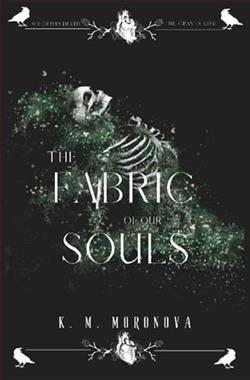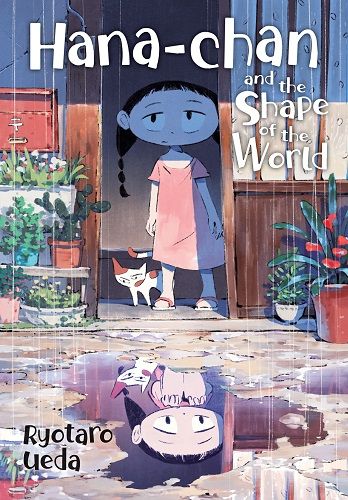Summary

The Fabric of our Souls
by K.M. Moronova
I’m twenty-six years old, and I want to die.
So when I wake up at the hospital with my brother weeping over me, I know my life is about to change. What I didn’t expect was to get a nurse with cruel eyes and a morbid sense of humor that surpasses my own.
I’m even more surprised when I arrive at Harlow Sanctum and realize that my brother selected an unorthodox rehabilitation center that rooms people based on their treatment plan. And my roommate is none other than the man with cruel eyes I met the day prior.
I crave death—he craves life.
Can two people like us cure each other?
.
Read
The Fabric of our Souls on http://kissnovel.net
Martial Peak Reviews
K.M. Moronova's The Fabric of Our Souls is a poignant exploration of despair, healing, and the intricate connections that bind us to one another. The novel opens with a stark and haunting declaration: “I’m twenty-six years old, and I want to die.” This raw honesty sets the tone for a narrative that delves deep into the psyche of its protagonist, who finds herself at a crossroads between life and death.
The story begins in a hospital, where the protagonist awakens to the sound of her brother's tears. This moment serves as a catalyst for her journey, forcing her to confront not only her own struggles but also the impact of her decisions on those who love her. Moronova skillfully captures the complexity of familial relationships, particularly the bond between siblings. The brother's anguish is palpable, and it highlights the often-overlooked emotional toll that mental health crises can take on loved ones.
Upon arriving at Harlow Sanctum, an unconventional rehabilitation center, the protagonist is thrust into a world that challenges her perceptions of healing. The center's unique approach to treatment—housing individuals based on their specific needs—creates an environment ripe for character development and interpersonal dynamics. Here, she meets her roommate, a nurse with “cruel eyes” and a dark sense of humor, who becomes a pivotal figure in her journey. This character, initially perceived as antagonistic, gradually reveals layers of complexity that mirror the protagonist's own struggles.
One of the most compelling themes in The Fabric of Our Souls is the juxtaposition of life and death. The protagonist craves death, while her roommate embodies a fierce will to live. This dichotomy serves as a powerful narrative device, allowing Moronova to explore the nuances of mental illness and the different ways individuals cope with their pain. The interactions between these two characters are charged with tension, humor, and ultimately, a sense of hope. Moronova's ability to weave dark humor into such a heavy subject matter is commendable; it provides moments of levity that are essential for balancing the emotional weight of the story.
Character development is a standout aspect of the novel. The protagonist's evolution from a place of despair to one of self-discovery is both realistic and inspiring. Moronova does not shy away from depicting the messy, often nonlinear path of recovery. The protagonist's journey is marked by setbacks and moments of clarity, making her transformation feel authentic. Readers will find themselves rooting for her as she navigates the complexities of her emotions and relationships.
Moreover, the supporting characters in Harlow Sanctum are richly drawn, each contributing to the protagonist's growth in unique ways. The diverse cast reflects the multifaceted nature of mental health, showcasing various struggles and coping mechanisms. This inclusivity adds depth to the narrative, allowing readers to see themselves in the characters and fostering a sense of connection.
Thematically, the novel also addresses the idea of community and the importance of human connection in the healing process. As the protagonist interacts with her fellow residents, she begins to understand that she is not alone in her suffering. This realization is a turning point in her journey, emphasizing the significance of shared experiences and the power of empathy. Moronova's portrayal of community as a source of strength is both uplifting and thought-provoking, encouraging readers to reflect on their own relationships and support systems.
In terms of writing style, Moronova's prose is both lyrical and accessible. Her ability to convey complex emotions through vivid imagery and poignant dialogue enhances the reading experience. The pacing of the narrative is well-balanced, allowing for moments of introspection alongside the more action-driven scenes. This rhythm keeps readers engaged while providing ample opportunity for reflection.
Comparatively, The Fabric of Our Souls resonates with works like The Bell Jar by Sylvia Plath and Girl, Interrupted by Susanna Kaysen, both of which tackle themes of mental illness and the quest for identity. However, Moronova's novel stands out due to its emphasis on the healing power of relationships and the importance of finding hope amidst despair. While Plath and Kaysen offer a more solitary perspective on mental health, Moronova invites readers into a communal space where healing is a shared endeavor.
Overall, The Fabric of Our Souls is a beautifully crafted narrative that tackles the complexities of mental health with sensitivity and grace. K.M. Moronova has created a story that is not only a testament to the struggles of those grappling with despair but also a celebration of the resilience of the human spirit. The novel's exploration of connection, healing, and the transformative power of love will resonate with readers long after they turn the final page.
In conclusion, this book is a must-read for anyone seeking a deeper understanding of mental health, the importance of community, and the intricate fabric of human relationships. Moronova's work is a reminder that even in our darkest moments, there is always a thread of hope waiting to be woven into the tapestry of our lives.
























Reviews 0
Post a Reviews: